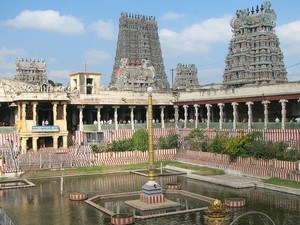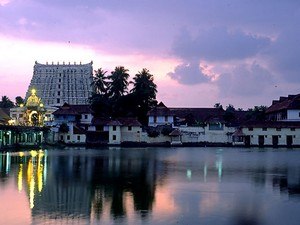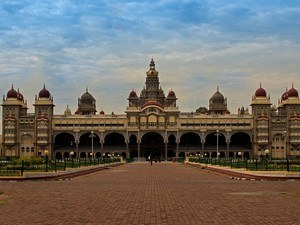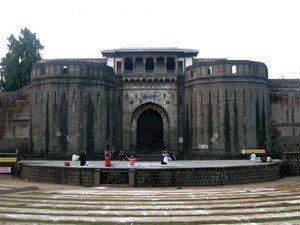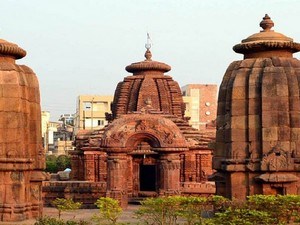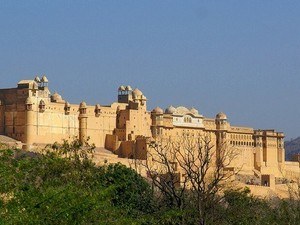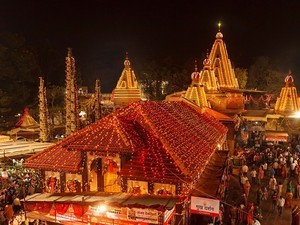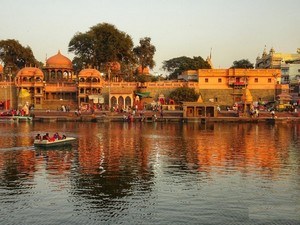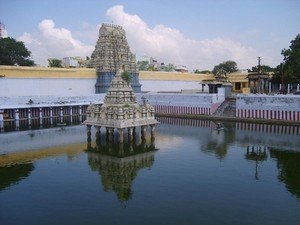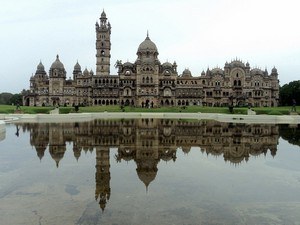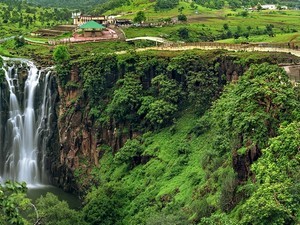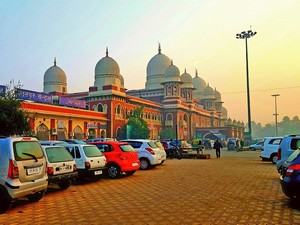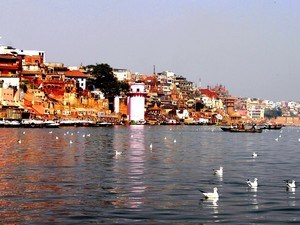1
DAY 1 : VIJAYAWADA LOCAL SIGHTSEEING
DAY 1 : VIJAYAWADA LOCAL SIGHTSEEING
 Travel from to
Travel from to
 Sightseeing
Sightseeing
Leisure / No Sightseeing
At a distance of 3 Kms from Vijayawada Railway Station, the Bhavani Island is situated upstream of River Krishna, close to the Prakasam Barrage.
The total area of the island is about 133acres. The island has extensive forest coverage, shimmering ponds and rolling meadows.
Boat riding facility is also available here.
 Duration of visit: 4 Hours/Half Day
Duration of visit: 4 Hours/Half Day
 Timings: Boat - 9 AM - 5 PM
Timings: Boat - 9 AM - 5 PM
At a distance of 24 km from Vijayawada Railway Station & 262 km from Hyderabad, Kondapalli Fort, also known as Kondapalli Kota, is located at Kondapalli Village in the Krishna district close to Vijayawada.
This 14th century Fort is believed to have been built by the Reddy King of Kondaveedu, Prolaya Vema Reddy. Spread over an area of 18 sq.km, this Fort is said to have served as a recreational palace for the king. The Fort was also used as a business centre. Later, the fort went into the hands of Gajapati rulers of Orissa. In the year 1520 AD the King, Sri Krishna Devaraya of Vijayanagara Empire has captured the Kondapalli fort in Kalinga wars. Later, the fort came into the hands of Qutubshahi Kings in the 16th century. During the colonial rule, the British soldiers were given training in this fort.
Situated on a hill, the fort has an impressive three storied rock tower protected by three levels of entries. The main entrance gate is known as the Dargah Darwaza, which has .....
 Duration of visit: 1-2 Hours
Duration of visit: 1-2 Hours
 Timings: 10 AM to 5 PM
Timings: 10 AM to 5 PM
At a distance of 4 km from Vijayawada Railway Station, Kanaka Durga Temple is located on the Indrakeeladri hill on the banks of Krishna River in Vijayawada. Kanaka Durga, the goddess of power and riches is considered the presiding deity of Vijayawada. It is one of the famous temples in South India. The shrine also called Sri Durga Malleswara Swami Temple dates back to the 8th century.
According to legend, goddess Durga killed demon Mahishasura and enshrined on the Keela Mountain with eight arms in the form of Mahishasura Mardini as she had given boon to Keela. Indra and all other gods worshipped the goddess Kanaka Durga on the hill which later known as Indrakeeladri. In Dwaapara Yuga, Arjuna did great penance on Indrakeeladri for Lord Shiva in order to get the most powerful Astra called Paashupataastra. Later, Lord Shiva appeared to fulfill the desire of Arjuna and called him as Vijaya (victorious). The place came to be known as Vijayawada after Arjuna's victory.
The deity .....
 Duration of visit: 2-3 Hours
Duration of visit: 2-3 Hours
 Timings: 4 AM - 4 PM and 6.15 PM - 10 PM
Timings: 4 AM - 4 PM and 6.15 PM - 10 PM
2
DAY 2 : MANGALAGIRI & AMARAVATI SIGHTSEEING
%%Itinerary_Title_Day2%%
At a distance of 6.5 km from Vijayawada Railway Station, 30 km from Guntur and 275 km from Hyderabad, The Undavalli Caves, a monolithic example of Indian rock-cut architecture, are located in Undavalli Village of Guntur district in Andhra Pradesh.
The Undavalli Caves are ancient cave temples believed to be built between 4th and 5th centuries by Gupta dynasty. The caves are located on a hill overlooking the Krishna River. These caves have been carved out of solid sandstone on a hillside. The best known and largest one has four stories with a huge statue of Lord Vishnu in a reclining posture sculpted from a single block of granite in the second floor. Other shrines inside the cave are dedicated to Trimurti- Brahma, Vishnu and Shiva. Main cave belongs to the earliest examples of Gupta architecture, primarily primitive rock-cut monastery cells carved into the sandstone hills. Initially caves were shaped as a Buddhist monastery and the first floor .....
 Duration of visit: 30 Mins - 1 Hr
Duration of visit: 30 Mins - 1 Hr
 Timings: 9 AM to 5.30 PM
Timings: 9 AM to 5.30 PM
At a distance of 12 Kms from Vijayawada Railway Station & 287 Kms from Hyderabad, Mangalagiri in Guntur district is famous for Panakala Narasimha Swamy Temple on the hill and Laxmi Narasimha Swamy Temple at foot of the hill.
Panakala Narasimha Swamy Temple - The idol is said to be Swambhu. The idol is covered by metal face and only the mouth is visible & it's widely opened. The God takes jaggery water (Panakam) as offering. The water is poured into the mouth, only half of the water is consumed and remaining is thrown out.
Panakala Swamy temple is opened only till 3 PM.
Laxmi Narasimha Swamy Temple ' Yudhishtira, the eldest of the pandavas is said to be the founder of the chief image of this temple and the deity here is called Sri Lakshmi Narasimha Swamy. The temple has a very tall 153 feet tower with beautiful sculpture which has 11 stairs. It was constructed by Raja Vasireddi Venkatadri Naidu, during the years 1807-09.
The Brahmothsavams held in feb/march attract .....
 Duration of visit: 2 Hours
Duration of visit: 2 Hours
 Timings: Panakala Swamy Temple - 7 AM to 3 PM
Timings: Panakala Swamy Temple - 7 AM to 3 PM
At a distance of 1 km from Amaravati Bus Station, Amaravati Stupa is a ruined Buddhist monument located in Amaravati, Andhra Pradesh. Popularly known as Mahachaitya or Great Stupa of Amaravati, it is one of the largest stupas in India and among the must visit places in Amaravati.
The great Buddhist Stupa or Mahachaitya of Amaravati is one of the greatest architectural achievements of ancient India. It was founded in the 3rd-2nd centuries BC during Ashoka Maurya' reign and enlarged in the 1st-4th centuries AD under the Satavahana and Ikshvaku patronage. It was a center of religious activities till the 14th century AD. Eventually, it fell into disuse and was rendered invisible by being covered in dust and debris over the course of time.
The mound was discovered in 1796, when the workmen of a local zamindar, the Raja of Chintapalli, stumbled upon the ruins. A year later, Colin Mackenzie, a British army officer, came upon the site and became the first to document the stupa. Subsequently .....
 Duration of visit: 30 Mins
Duration of visit: 30 Mins
 Timings: 8 AM - 6 PM, Closed on Fridays
Timings: 8 AM - 6 PM, Closed on Fridays
At a distance of 500 m from Mahachaitya and 1 km from Amaravati Bus Stand, Amaravati Museum is an archeological museum situated in Amaravati, the de-facto capital of Andhra Pradesh, India. Just opposite to Amaravati Stupa, it is one of the popular museums in Andhra and among the top places to visit in Amaravati as part of Vijayawada Tour Packages.
Maintained by ASI, the Amaravati Museum is an amazing repository of relics that have been gathered from the ruins of this 2000 year old Buddhist settlement as well as from nearby places. These artefacts belong to the period 3rd century BC to 12th century AD exhibit in three different galleries. The ancient and complex art work done by the craftsmen of that period are displayed in the first gallery. The Purnakumbha designs and the Lotus designs here express the intricate art of those days. The two drums of slab depicting the Stupas, Swastika mark on the cushioned seat of the throne under the Bodhi tree, the Agni Skanda (Flaming pillar), the .....
 Duration of visit: 30 Mins
Duration of visit: 30 Mins
 Timings: 9 AM - 5 PM, Closed on Fridays
Timings: 9 AM - 5 PM, Closed on Fridays
At a distance of 1.5 km from Amaravati Bus Station, Amareswara Temple is a Hindu temple situated on the bank of Krishna River in Amaravati, Andhra Pradesh. Also called as Amaralingeswara Swamy Temple, it is one of the well-known places of pilgrimage in Andhra Pradesh and among the popular places to visit in Amaravati.
Dedicated to Lord Shiva, Amaralingeswara Temple is regarded as one of the Pancharama Kshetras of Lord Shiva. The other four places are Draksharama, Kumararama at Kotipalli, Bheemarama at Samalkota and Ksheerarama at Palakollu. Legend has it that when Subramanya killed the demon Tarakasura, the Shivalingam in his throat broke and fell in five different spots, which became the Pancharama kshetras. It is believed that the sacred Shivalinga of Amareswara Swamy Temple was installed by Lord Indra himself.
Though the origin of the temple is shrouded in the Puranas, the temple was renovated and expanded by Vasireddy Venkatadri Naidu, who was the zamindar of Chintapalli .....
 Duration of visit: 30 Mins
Duration of visit: 30 Mins
 Timings: 6 AM - 1 PM & 4 PM - 8 PM
Timings: 6 AM - 1 PM & 4 PM - 8 PM
At a distance of 2 km from Amaravati Bus Station, the Dhyana Buddha is a statue of Lord Buddha situated in Amaravati, Andhra Pradesh. It is one of the tallest Buddha statues in India and among the most important places to visit in Amaravati.
Standing tall at a height of 125 feet, the statue of Dhyana Buddha was commissioned in 2003 and completed in 2015. The statue is situated in 4.5 acre scenic locale on the bank of Krishna River. Made out of concrete and stone, this giant statue was sculpted by R. Mallikarjuna Rao, the Joint Director of Social Welfare, Guntur. The statue was designed by incorporating features from all the 50 types of Buddhist sculptures from 145 major heritage sites all over India.
The statue is in meditating posture while he is seated on a giant lotus supported by eight pillars symbolizing the Buddha's eight fold path to attain salvation. The area is divided into four zones depicting the four noble truths. The five ayaka pillars made of sand stone symbolize .....
 Duration of visit: 30 Mins
Duration of visit: 30 Mins
 Timings: 8 AM - 6 PM
Timings: 8 AM - 6 PM
End
 Travel from to
Travel from to
 Travel from to
Travel from to
END OF THE TOUR

